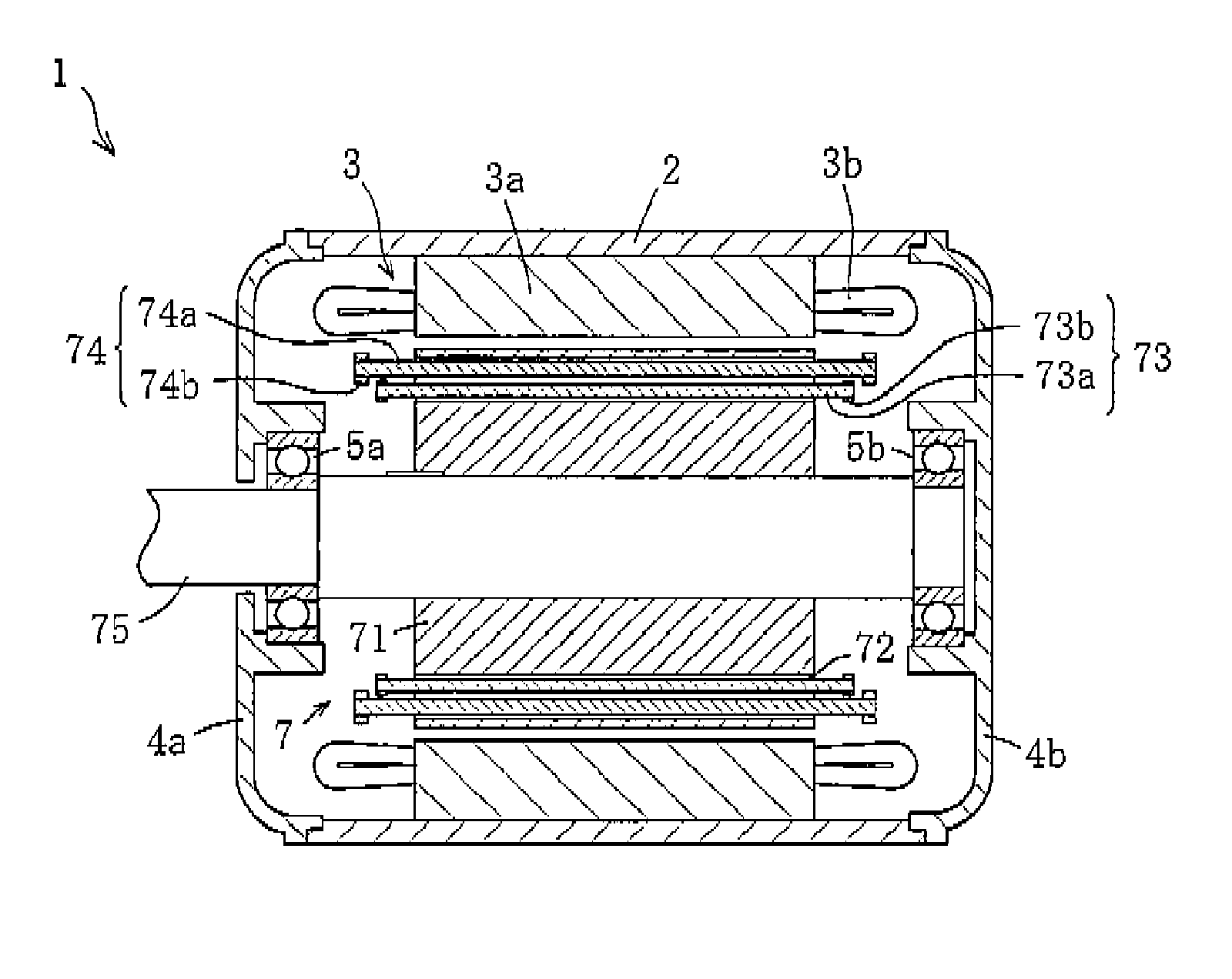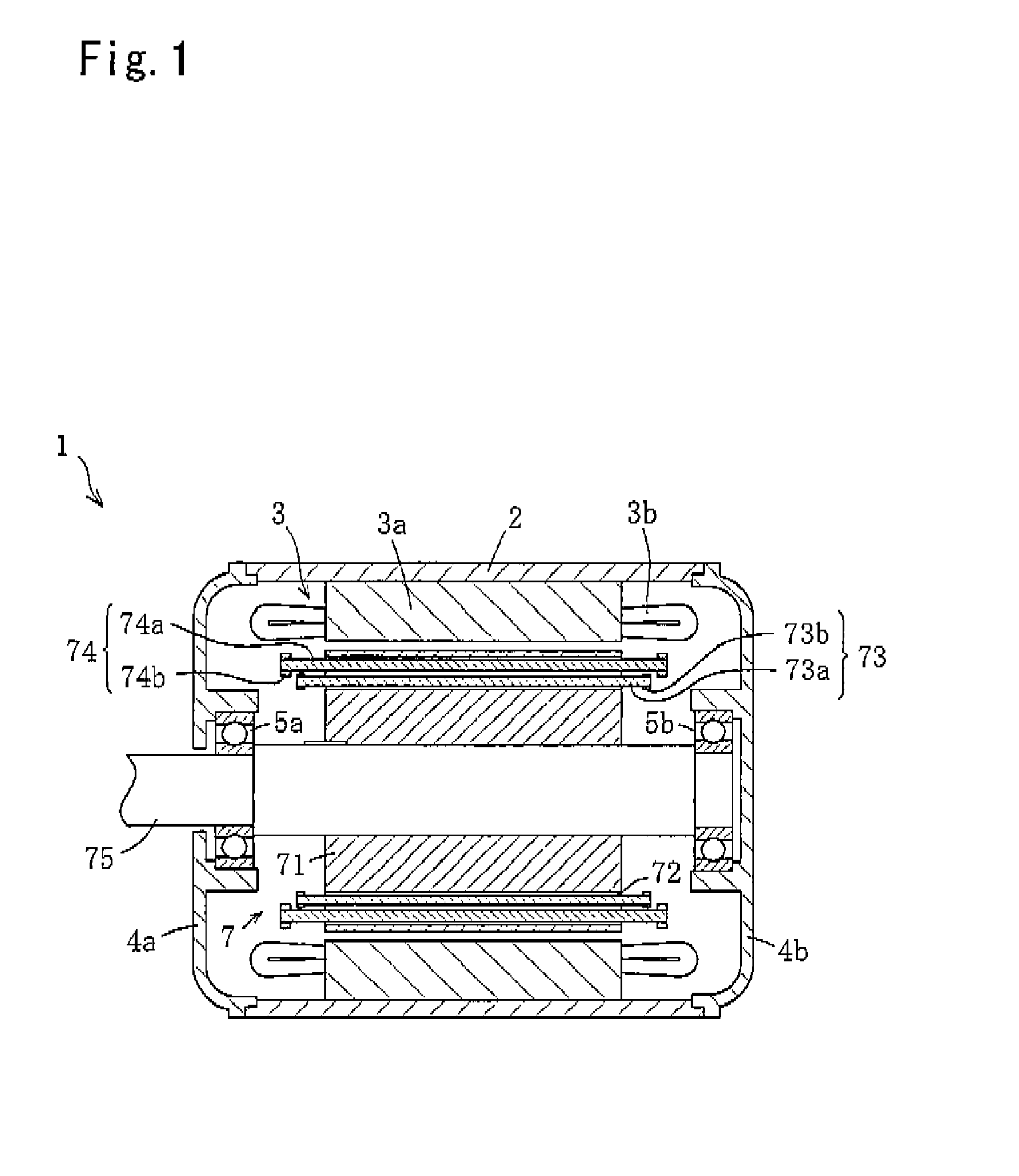Superconductive rotor, superconductive rotating machine and superconductive rotating-machine system
a technology of rotating machine and superconducting rotor, which is applied in the direction of superconductor devices, mechanical devices, synchronous motors, etc., can solve the problems of efficiency and speed control disadvantages, and achieve the effect of satisfying heat dissipation performance upon heat generation, large current capacity, and easy introduction into the sta
- Summary
- Abstract
- Description
- Claims
- Application Information
AI Technical Summary
Benefits of technology
Problems solved by technology
Method used
Image
Examples
Embodiment Construction
[0054]Hereinafter, a preferred embodiment of the present invention will be described with reference to the drawings.
[0055]FIG. 1 is a longitudinal cross-section end view of a superconductive electric motor according to the present invention. FIG. 2 provides views (A), (B) and (C) respectively illustrating a superconductive squirrel-cage winding, a normally conductive squirrel-cage winding and a rotor core of the superconductive electric motor in FIG. 1. FIG. 3 is a schematic view illustrating in horizontal cross-section a superconductive wire included in the superconductive squirrel-cage winding in FIG. 2. FIG. 4 is a horizontal cross-sectional view of a rotor of the superconductive electric motor in FIG. 1, and FIG. 5 is a block diagram illustrating a superconductive electric motor system to which the superconductive electric motor in FIG. 1 is applied.
[0056][Superconductive Electric Motor]
[0057]As shown in FIG. 1, the superconductive electric motor (superconductive rotating machin...
PUM
 Login to View More
Login to View More Abstract
Description
Claims
Application Information
 Login to View More
Login to View More - R&D
- Intellectual Property
- Life Sciences
- Materials
- Tech Scout
- Unparalleled Data Quality
- Higher Quality Content
- 60% Fewer Hallucinations
Browse by: Latest US Patents, China's latest patents, Technical Efficacy Thesaurus, Application Domain, Technology Topic, Popular Technical Reports.
© 2025 PatSnap. All rights reserved.Legal|Privacy policy|Modern Slavery Act Transparency Statement|Sitemap|About US| Contact US: help@patsnap.com



